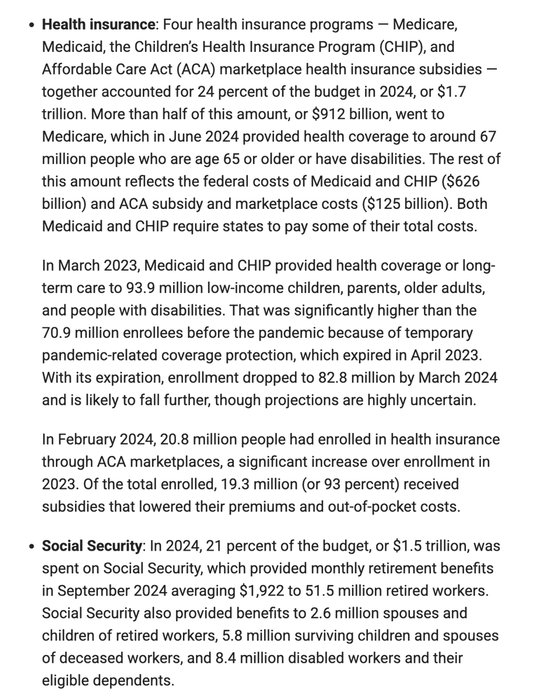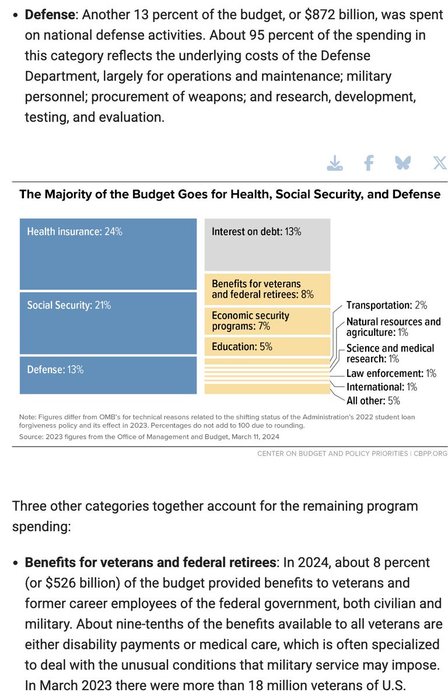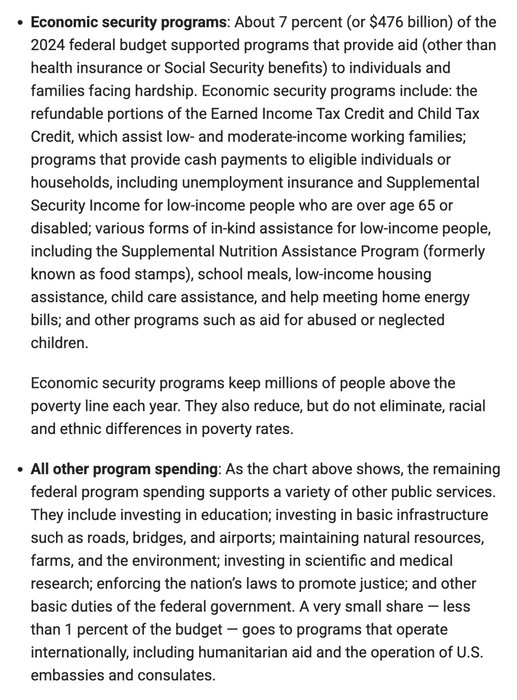


Also, if you think these priorities are out of whack (which I do!) you should start grappling with how and why our spending looks like this.
Source: https://t.co/xJ6RXScUT0 https://t.co/vlCP1sSZHT
Also, if you think these priorities are out of whack (which I do!) you should start grappling with how and why our spending looks like this. Source: https://t.co/xJ6RXScUT0 https://t.co/vlCP1sSZHT



Right now, there are two important policy changes that have come out in 2025. The first is DOGE aimed at eliminating waste, fraud and abuse in the government. The second is tariffs aimed at making global trade more fair
Which matters more?
The chart today looks at each in terms of their size relative to the GDP of the US. The scales are different to
... See more